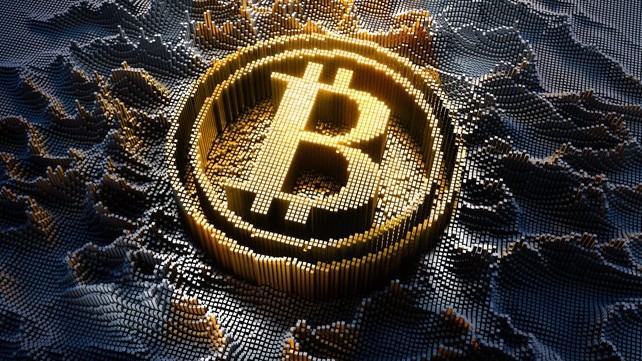This article was originally published on Fool.com. All figures quoted in US dollars unless otherwise stated.
Bitcoin (CRYPTO: BTC) has nearly doubled in value so far in 2021 with just a month to go until the new year. It's been a wild ride getting there, though. After a big surge last winter, the original cryptocurrency was halved in price over the summer, only to reclaim all-time highs again in the autumn.
But with the new omicron coronavirus variant sending investment markets into turmoil again, the arbitrary but long-awaited $100,000 Bitcoin milestone (74% higher than the going price as of this writing) is still a ways off at this point and looks unlikely to be reached in 2021.
But cryptocurrency prices are volatile, both on the way down and the way up. It's possible Bitcoin could reach the $100,000 mark in 2022. Here's how it could happen.
Three catalysts for another Bitcoin run higher
Bitcoin enjoys first-mover status since it launched in 2009, six years ahead of what is now the second-largest cryptocurrency, Ethereum (CRYPTO: ETH). With a market cap of over $1 trillion, Bitcoin also sits high atop the crowded cryptocurrency field and has picked up plenty of adopters among individual and institutional investors alike.
But since it's a type of scarce resource (presently, nearly 18.9 million coins have been mined, out of a long-term maximum of 21 million coins), Bitcoin could go higher if demand increases. Here are three catalysts that could edge it to $100,000 next year:
- Bitcoin is viewed as a store of value if inflation persists.
- Adoption spreads among companies, institutional investors, and sovereign nations.
- Increased adoption of the Bitcoin network as a decentralized finance (DeFi) solution after the Taproot update.
A better value-storing alternative to cash?
With prices for basic goods and services soaring in 2021 due to the effects of the pandemic, Federal Reserve Chairman Jerome Powell frequently called inflation a "transitory" event. I, too, have thought of inflation as being temporary, and perhaps it could start to ease in 2022. But with supply chains still constrained, that "transitory" adjective has been retired for now at the Federal Reserve as we enter the second year of an inflationary environment.
As inflation erodes the buying power of cash, one reason many investors have begun to accept Bitcoin as a legit asset class is its potential to keep up with (or outpace) higher prices in the economy. That's because of the cap on the number of coins that can ever be mined, versus fiat currencies like the U.S. dollar that have no limit to how much can be printed. If inflation concerns persist in 2022, more investors might seek out Bitcoin as an alternative to their cash, which could help send it toward that $100,000 goal line.
More adoption by big investors
All indications point to a growing list of big institutional investors getting involved with the cryptocurrency industry. For example, the bank Silvergate Capital (NYSE: SI) operates an exchange (called SEN) that facilitates digital currency payments 24/7, a crucial capability for cryptocurrency investors and traders since the market is always open. SEN had 1,305 institutional users at the end of the third quarter, up from 1,224 three months prior and only 928 in the year-ago period.
Besides big investors, the Central American republic of El Salvador recently became the first country to accept Bitcoin as legal tender. Other countries, especially in Latin America, have also expressed interest in following suit one day. And a handful of big companies have also replaced some or all of the cash on their balance sheet with Bitcoin.
Paired with institutional investor support, these cryptocurrency adopters could also spur on smaller retail investors. A boost in demand from all of the above could push the value of Bitcoin toward $100,000 in 2022.
An update to Bitcoin's everyday functionality
In November 2021, the Bitcoin blockchain network underwent its first major update since 2017. Known as Taproot, the upgrade is aimed at making Bitcoin a more viable solution for everyday DeFi services and apps (online-based digital payments, lending, etc.). This is an area Bitcoin has struggled in, as features of its blockchain have made it difficult to use for an everyday payments solution. In contrast, Ethereum was purpose-built for DeFi and dominates on this front.
It took years for the last major Bitcoin update (known as SegWit) to be adopted by miners and other holders of the cryptocurrency. Nevertheless, Taproot received overwhelming support among its ecosystem of users and investors, and a gradual update to the ecosystem could attract developers who are building new financial services and products using cryptos. More daily use of Bitcoin as a means of transacting business would also be good news for its value in 2022.
Should you invest in Bitcoin for 2022?
What I'm not saying here is that you should pile into Bitcoin. Investing in cryptocurrencies of any kind -- including the original and largest token on the block -- isn't for everyone. Even if Bitcoin should arrive at $100,000 in 2022, it's going to be a wild ride. If you do invest in this volatile space, keep those bets a small percentage of your total investable net worth.
And if you decide to replace any cash position in your investment portfolio with Bitcoin, don't use up all your dollars. Inflation does eat away at your buying power over time, but cash has its merits. It doesn't fluctuate in value as cryptocurrencies do, and having some cash laying around affords the opportunity to buy on the inevitable dips in investment values.
Nevertheless, Bitcoin is picking up interest from all sorts of big organizations around the globe, and a rally higher in 2022 is quite possible. If you're interested in investing in cryptocurrencies, Bitcoin is a great place to start.
This article was originally published on Fool.com. All figures quoted in US dollars unless otherwise stated.









